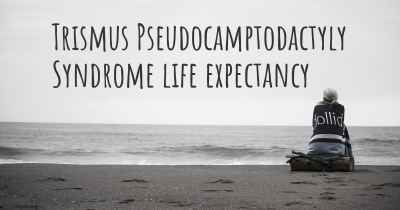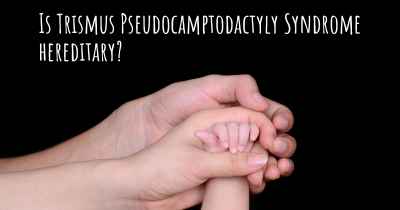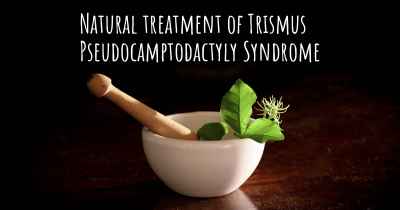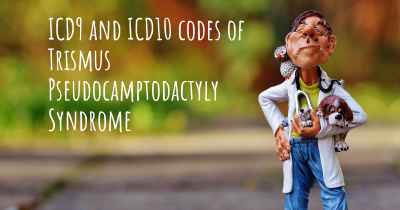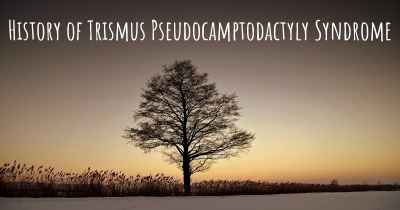Living with Trismus Pseudocamptodactyly Syndrome. How to live with Trismus Pseudocamptodactyly Syndrome?
Can you be happy living with Trismus Pseudocamptodactyly Syndrome? What do you have to do to be happy with Trismus Pseudocamptodactyly Syndrome? Living with Trismus Pseudocamptodactyly Syndrome can be difficult, but you have to fight to try to be happy. Have a look at things that other people have done to be happy with Trismus Pseudocamptodactyly Syndrome
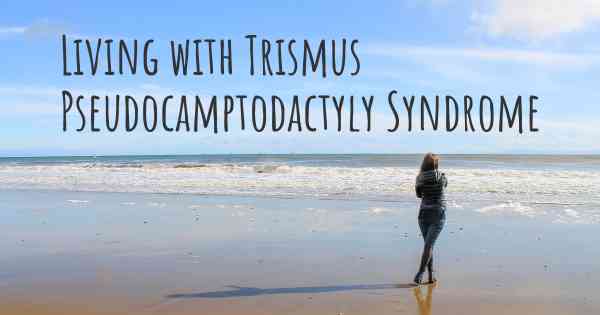
Living with Trismus Pseudocamptodactyly Syndrome
Trismus Pseudocamptodactyly Syndrome (TPS) is a rare genetic disorder characterized by the combination of limited mouth opening (trismus) and fixed flexion deformity of the fingers (pseudocamptodactyly). Living with TPS can present unique challenges, but with proper management and support, individuals with this syndrome can lead fulfilling lives.
Understanding Trismus Pseudocamptodactyly Syndrome
TPS is caused by mutations in the MYH8 gene, which is involved in muscle development. The exact mechanisms leading to the characteristic symptoms of TPS are not fully understood. Trismus, or limited mouth opening, can make it difficult to eat, speak, and maintain oral hygiene. Pseudocamptodactyly affects the fingers, causing them to be permanently flexed, which can impact dexterity and fine motor skills.
Medical Management
It is crucial for individuals with TPS to work closely with a multidisciplinary medical team, including geneticists, orthopedic specialists, and oral surgeons. The team will develop a personalized treatment plan to address the specific needs of each individual. This may include:
- Physical therapy: Regular physical therapy sessions can help improve muscle strength, flexibility, and range of motion in the jaw and fingers.
- Oral interventions: Oral surgeons may recommend procedures such as jaw stretching exercises, splints, or surgical interventions to improve mouth opening.
- Hand therapy: Occupational therapists can provide hand exercises and adaptive techniques to enhance finger function and dexterity.
- Pain management: Some individuals with TPS may experience pain or discomfort. Working with a pain specialist can help develop strategies to manage and alleviate pain.
Adapting Daily Activities
Living with TPS may require adapting daily activities to accommodate the limitations imposed by the syndrome. Here are some strategies that can help:
- Diet modifications: Due to limited mouth opening, it may be necessary to modify the texture and consistency of food to ensure safe swallowing. Consultation with a nutritionist can provide guidance on maintaining a balanced diet.
- Assistive devices: Using adaptive tools such as special utensils, modified keyboards, or gripping aids can assist with tasks that require finger dexterity.
- Communication techniques: If speech is affected, alternative communication methods like sign language, speech-generating devices, or text-to-speech apps can facilitate effective communication.
- Emotional support: Living with a rare disorder can be challenging emotionally. Seeking support from family, friends, or joining support groups can provide a sense of belonging and understanding.
Education and Employment
Individuals with TPS can pursue education and employment opportunities with appropriate accommodations and support. It is essential to communicate with educational institutions or employers about specific needs and explore available resources, such as:
- Individualized Education Plans (IEPs): For students, an IEP can outline necessary accommodations, modifications, and support services to ensure equal access to education.
- Workplace accommodations: Employers can provide assistive technology, ergonomic adaptations, or flexible work arrangements to enable individuals with TPS to perform their job tasks effectively.
- Vocational rehabilitation services: These services can offer career counseling, job training, and support in finding suitable employment opportunities.
Embracing a Supportive Network
Living with TPS can be challenging, but building a strong support network can make a significant difference. Surrounding yourself with understanding family members, friends, and healthcare professionals who are knowledgeable about TPS can provide emotional support, practical assistance, and valuable resources.
Advocacy and Awareness
Advocating for yourself and raising awareness about TPS can help promote understanding, research, and support for individuals with the syndrome. Consider participating in support groups, sharing your experiences, and engaging in advocacy efforts to make a positive impact on the TPS community.
While living with Trismus Pseudocamptodactyly Syndrome presents unique challenges, with proper medical management, adaptive strategies, and a supportive network, individuals with TPS can lead fulfilling lives and overcome many obstacles they may encounter.
Posted Dec 20, 2017 by Crystala 700
